How Does CS2 Damage Work? - CS2 Pulse
Besides planting or defusing the bomb, you can also win a CS2 round by eliminating the enemy team. CS2 offers a different assortment of assault rifles, pistols, and other weapon types that players can use to damage their opponents and eventually kill them. But how does the damage system in CS2 even work? Here is a complete guide on precisely that.
Base Damage by Weapon
The first stage where the damage variation begins is with the weapon. Each weapon in CS2 has a different damage value, called the base damage. For example, the AK-47 has a base damage of 36, while the Glock-18 has 30. The damage variation also exists within the same weapon type. For instance, the M4A1-S, despite being similarly priced and within the same category as the AK-47, has a base damage of 38.
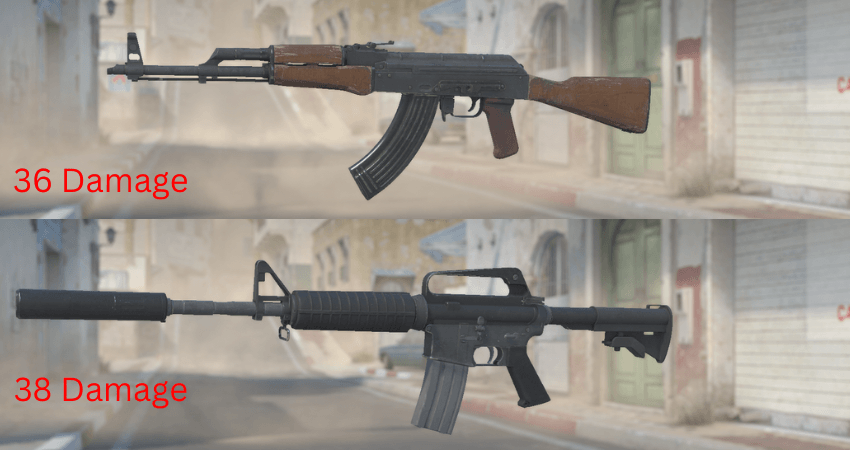
All other variables that affect damage have multipliers. To calculate the final damage the enemy receives after getting shot, we must apply these multipliers to the base damage of each weapon. For example, if an enemy is further from you, the damage they receive if you shoot them will be lower than if they were near you. We can calculate this damage reduction by applying the range drop-off multiplayer on the base damage for that particular weapon.
Damage Drop Off in CS2
The second aspect that affects the damage of weapons in CS2 is the range. The thing is, CS2, like many other first-person shooters, has damage drop-off. In other words, if you shoot an enemy, the damage they receive will depend on how far they are from you. The further they are, the lower the damage. It makes sense that developers would implement this gameplay mechanic since being able to deal 100% of the base damage using pistols on an enemy miles away seems absurd.
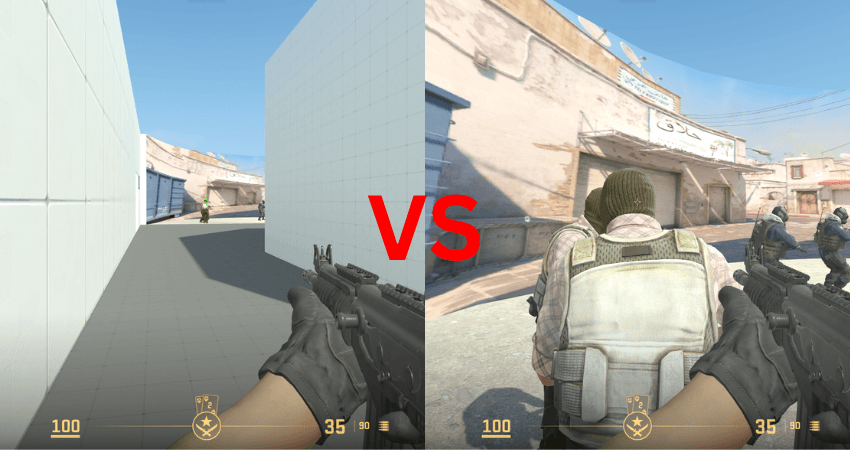
So, how does the damage drop-off in CS2 work? Well, each weapon in the game has an attribute called the “Damage Falloff Percentage,” which is a value that determines what percentage of base damage will remain after a distance of 500 units, which is around 9.5 meters. For example, the AUG has a 2% Damage Falloff and a 28 base damage. If you shoot a person 9.5 meters away, they’ll receive 27 damage (rounding down from 27.44).
Body Part Damage Multiplier
Up next, we have damage based on the body parts. In CS2, the damage that your in-game character receives depends on where they get shot. Most first-person shooters have this gameplay mechanic since they try to emulate certain aspects of real life. In this case, the aspect CS2 is trying to emulate is how getting shot in certain body parts, like the head or chest, is way more damaging than other parts, like legs or feet.
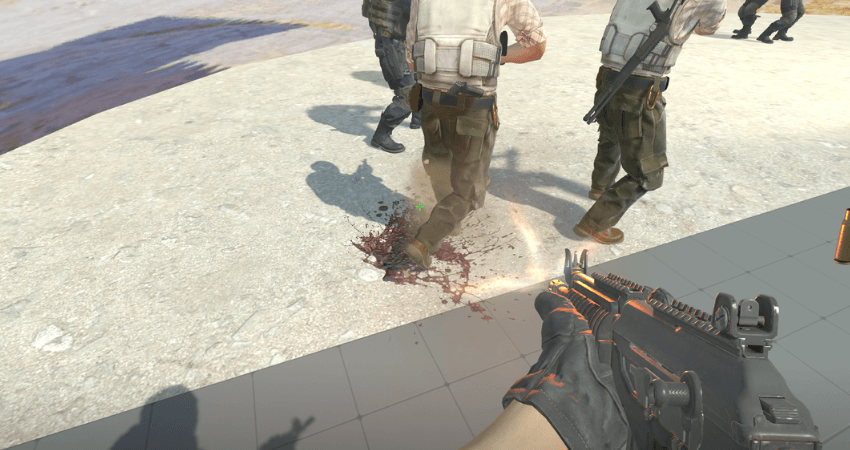
Now, let’s talk about how body part damage works in CS2. Firstly, the in-game character model in CS2 has four major body part classifications. It includes the Head, Stomach, Chest/Arms, and Legs. Each one has a different damage multiplier, which is 400% for the Head, 125% for the Stomach, 100% for the Chest and Arms, and 75% for the Legs.
So what do all these numbers mean? To calculate the damage a player will receive, you need to select the damage multiplier of the body part they got shot at. After that, multiply it by the base damage of the weapon. For example, the MP7 has a base damage of 29. If you shoot someone in the Head with the MP7, they’ll get damaged for 116 units, four times or 400% of the base damage.
Kevlar and Helmet Damage Reduction
Finally, we have the damage reduction players get by equipping either the armor or the armor plus helmet combo. If you have played CS2, you probably already know that you can purchase either a Kevlar vest during the buy phase or a Kevlar vest plus helmet combo, which provides additional protection from enemy fire. But how much protection is that exactly?
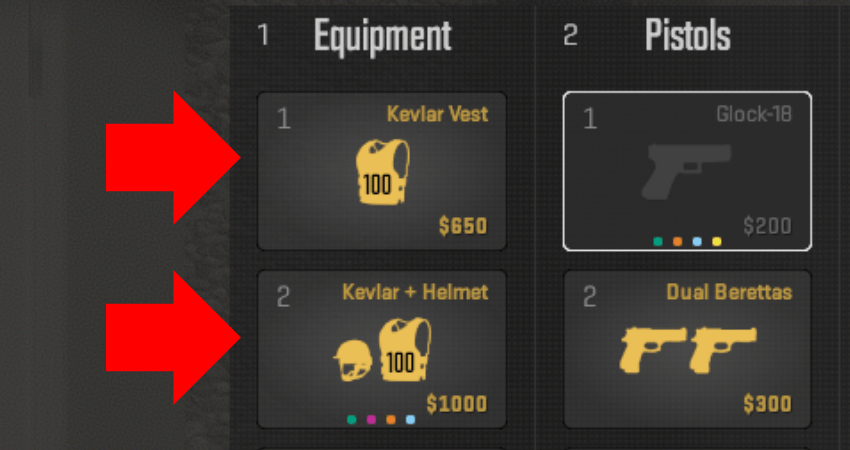
Firstly, the armor will only protect those parts of the in-game character model’s body covered by it, which are the Stomach and the Chest/Arms. The Legs will receive damage as they normally would without any armor equipped. Plus, to protect the Head, you must have a helmet. Otherwise, the Head will receive regular damage.
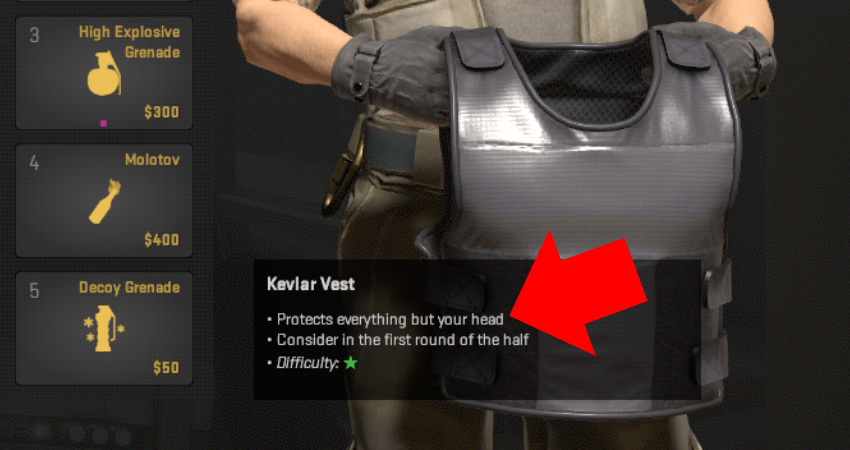
Secondly, the damage reduction a player gets for wearing the armor depends on the type of weapon they get shot with. Each weapon in the game has an attribute called “Armor Penetration,” which determines the percentage of base damage the player will receive. Keep in mind that we must first apply the Damage Falloff Percentage, then the body part damage multiplier, and then the Armor Penetration reduction.
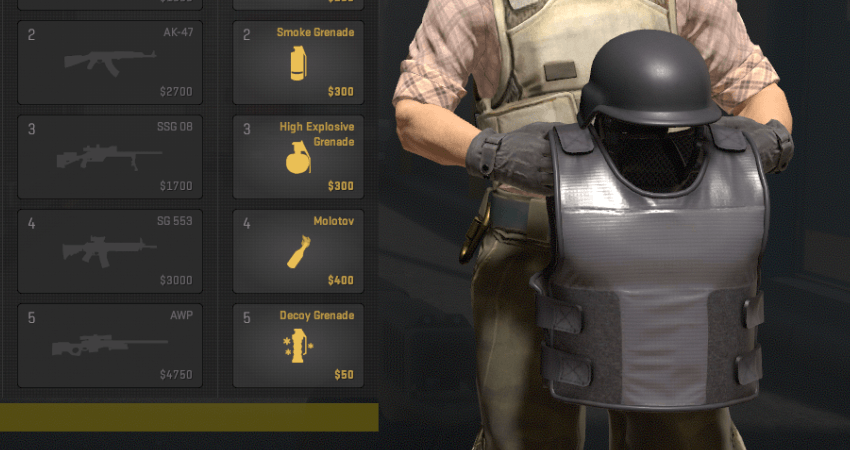
For example, the AK-47 has a base damage of 36, and according to the body part damage multiplier, a player will receive four times that (144) if they get shot in the Head while being less than 500 units from the shooter. However, if the player is wearing a helmet, they will only receive 111.6 damage since the armor penetration of the AK-47 is 77.5%. The remaining 32.4 damage points get deducted from the armor bar instead of the health bar.
Calculating Final Damage Taken
To calculate the accurate damage a player will receive, you must be careful of the order of each damage modifier you apply. As you might have already figured out, the first damage modifier you must apply to the base damage is the Damage Falloff Percentage. After that, we have the Body Part Multiplier. And then, finally, you can apply the Armor Penetration.
Conclusion
Understanding CS2’s damage system is crucial for players seeking strategic advantage. Each weapon in CS2 not only has a different base damage, but different damage modifiers also apply on top of that, which results in the final damage that a player receives. Now you know how all of those damage modifiers work.











